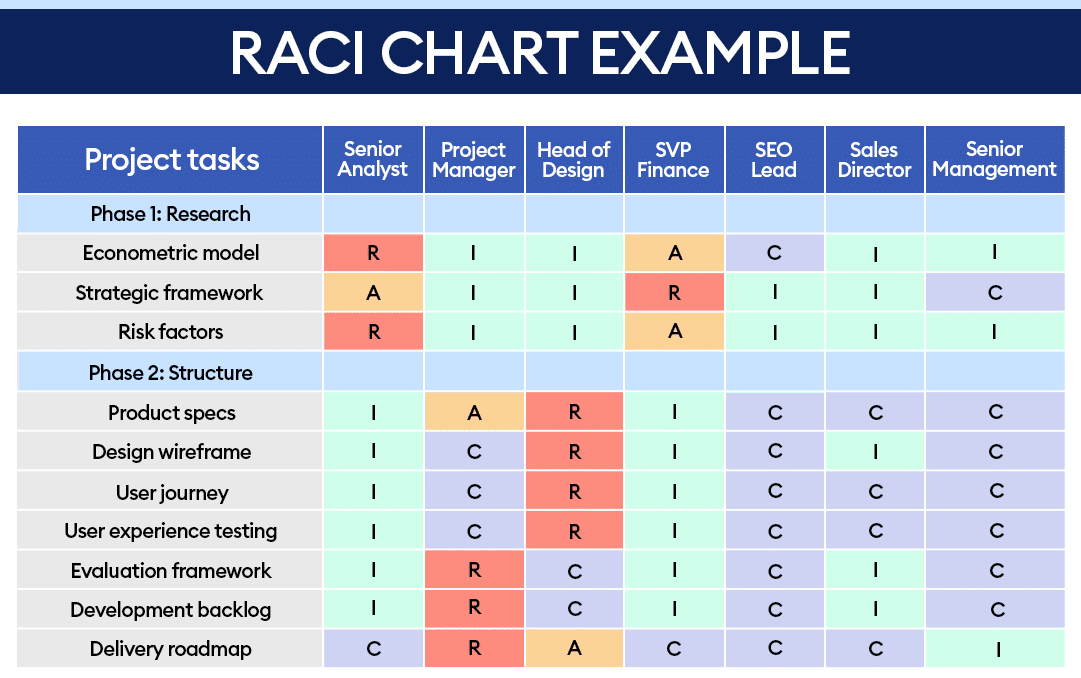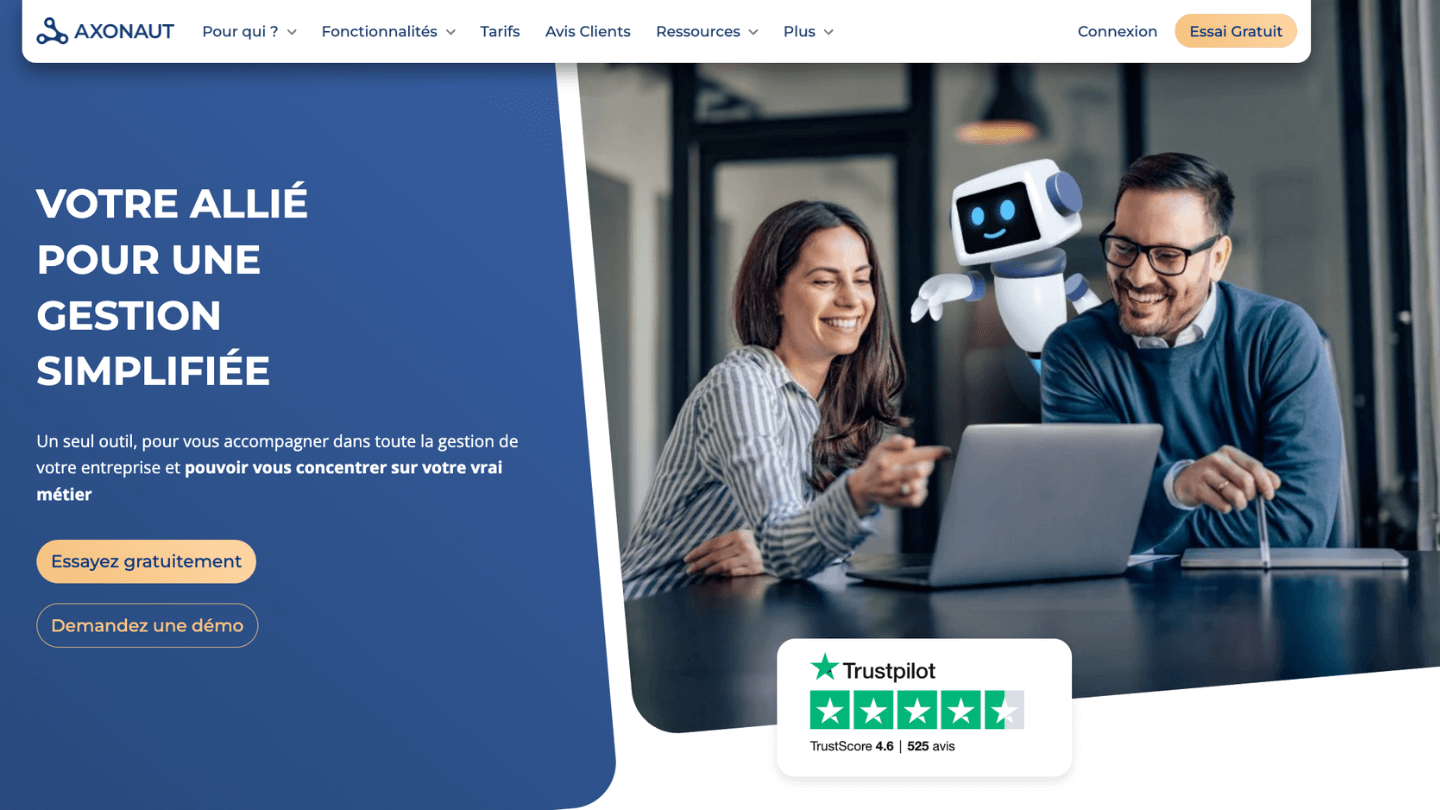In business, we often think that our offer perfectly matches our customer’s needs.
It’s an illusion: 8% of companies were on a par with the customers surveyed in a Bain study – while 80% of the 362 companies responding to the survey thought they were offering a superior experience to their customers.
Two explanations:
The first is that, in seeking to grow, a company often affects its core of loyal, profitable customers. For example, a company that raises its transaction fees to increase revenue per customer.
The second is that it’s extremely difficult to understand what customers really want, and to keep up with their ever-changing needs. Worst of all, initiatives to get to know your customers better can backfire: by collecting too much data, your customers become numbers and segments rather than individuals.
In this article, we give you some keys to developing good customer relations.
Sommaire
The special nature of B2B customer relations
A B2B purchase serves the needs and objectives of an organization and its teams – not the needs of an individual.
#1 Many people involved in the business relationship
A B2B purchasing process involves several stakeholders – on both the customer and vendor sides.
On the supplier side, there are a lot of people in contact with a customer: sales, support / CSM / Account manager, marketing advocacy, product research, and so on.
The advice often given is to contact your customers to understand them properly – which is a bit ironic when you consider that there isn’t just one person involved in a purchase, but many different players.
#2 The length of the purchasing process
The organizational structure of the client company can have a major impact on the length of the process: the more stakeholders there are, the longer the process is likely to take.
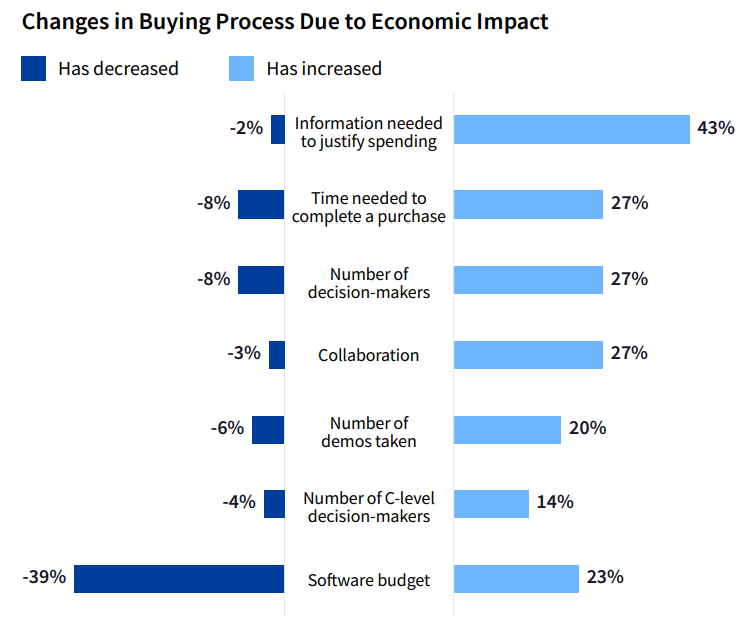
Source: TrustRadius
27% of buyers say they are involving more players in the decision-making process because of the current economic climate. 14% indicated that C-level decision-makers were more involved.
The customer relationship begins much earlier, at the assessment phase.
#3 Products and services sold are more complex
In B2B, the level of complexity of the products sold is higher. Customer demands are more complex, and at the same time their knowledge is also more important.
From the seller’s point of view, this means that the company must be able to respond to this complexity.
Context is all the more important: we can’t waste the customer’s time with standard questionnaires. Ideally, you’d like to adopt a coaching approach: the support staff knows more about the software or service, but less about the subject than the person contacting them.
10 best practices for B2B customer relations
#1 Identify your best customers
Where are your most profitable customers and how can you deepen your relationship with them? Where are your problem customers? The graph shows the level of customer recommendation, measured by the Net Promoter Score (NPS), on the horizontal axis, and the level of customer profitability on the vertical axis.
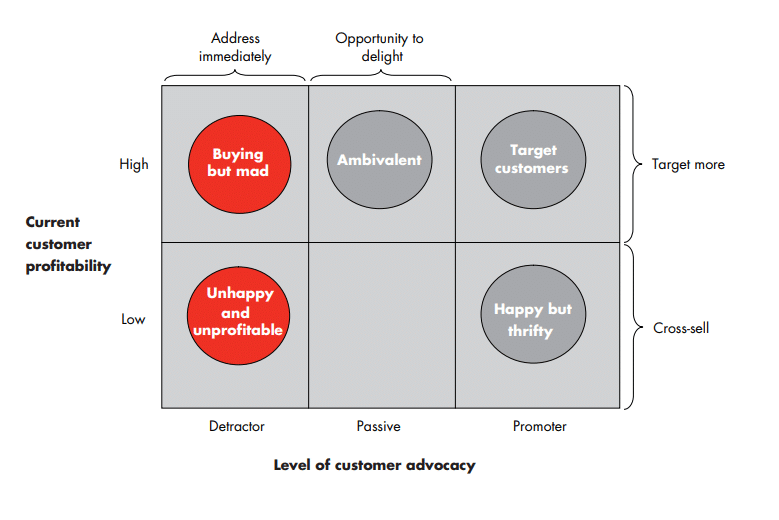
Source:
Bain
- Top right, the company’s core target: you want to keep them, find others like them and explore the additional products or services they need. They’re your main source of innovation, so listen to them.
- At the top left are the “false profits”, the customers who “buy but are mad”: they’re profitable at the moment but only stay because they have no other choice. You need to deal with this group quickly, for example by directing them to the right product range – otherwise, they can turn the market against you.
- Bottom left: the “unhappy and unprofitable”, i.e. the buyers who aren’t satisfied anyway. It’s a good idea to help them migrate to other suppliers.
To identify at-risk customers, a customer success tool can be a great help.
#2 Make the most of all customer feedback
There are two ways to guarantee an efficient service:
The first is a question of attitude: take every interaction into account. While data mining and CRM tools can help you assess what customers are thinking, you need to pay particular attention to their recommendations, i.e. what they say about you to others.
The second practice is organizational. The best companies deliver targeted value propositions throughout the customer experience. The idea behind it is that customers don’t really care which of a company’s functions meets their needs, or how cost-effective it is – they just want the promise to be delivered.
#3 Listen to dissatisfied customers too
Even if complaints take more time and effort to resolve, they should be listened to just as much as the opinions of satisfied customers. Handling a complaint brilliantly is also a chance to build customer loyalty – even more so than if no complaint had been made.
For a company, it’s an opportunity to develop a more competitive brand with a more compelling customer experience.
Except that complaint management has to be perfect, which isn’t always easy because a customer who complains already has a negative opinion of the company. The challenge is great, as is the reward.
The problem is that there are plenty of dissatisfied customers who choose not to complain. Over the past three decades, the American Customer Satisfaction Index (ACSI) shows that 12.8% of customers have officially complained to companies, but in reality, 30% of customers have complained more informally on social networks and then choose substitute products.
Conclusion: it’s often better for customers to complain than not to complain (and simply walk away) if the company can deal with the complaint satisfactorily without exhausting its resources.
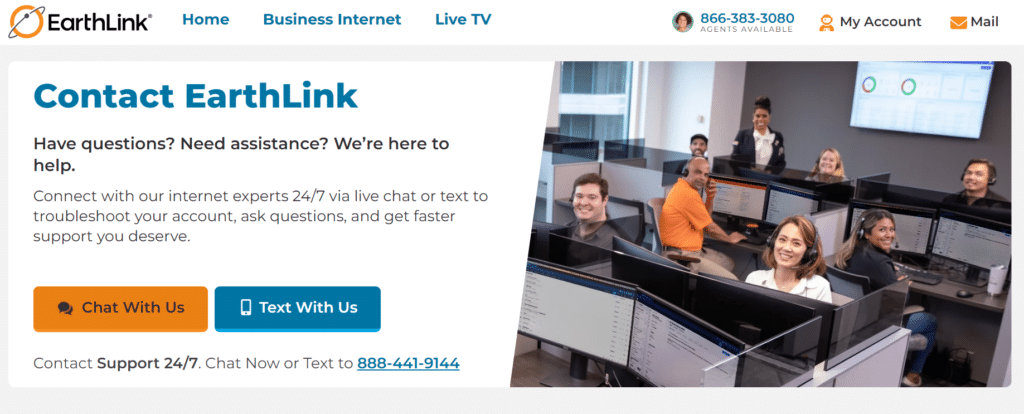
EarthLink, for example, has a team of specialized representatives on its self-service website, who are on hand to help customers whenever they need it. They can launch a chat with a customer who has spent more than 90 seconds in the knowledge center or clicked on the “Contact us” link. This program has reduced calls by 8%.
#4 Controlling customer communications
The idea is that each customer communication should be adapted to its stage in the sales process. This includes creating cross-functional teams to deliver a compelling experience:
- You need to identify your key customers in order to offer them an experience tailored to their needs, and develop feedback loops.
- On a more macro scale, you need to align your goals, metrics, systems and organizational structure to become a customer-focused organization.
It sounds simple, but it can be a complex balancing act between customer satisfaction and operational efficiency. To solve this problem, there’s a trend called the “1/3-1/3-1/3” rule:
- Around a third of operational efficiency measures taken by companies are of no consequence to customers, and can even lead to revenue opportunities.
- The second third, on the other hand, leads to actions that damage the customer experience, and therefore lead to lower revenues.
- The final third requires discussions between the various functions to determine whether these measures can be implemented without upsetting the cost-customer balance.
#5 Listen and show it
Customers want to be able to buy the product they need when and where it suits them. Faced with these increasingly complex demands, where the buying experience is part of the journey, companies need to listen to their customers and be agile.
A company that can create a competitive mix of speed, quality, cost and flexibility can thrive in its marketing ecosystem and align itself more effectively with its customers’ objectives. And therefore to offer an exceptional customer experience.
On a more micro level, the best companies also offer exceptional customer service. For example, CRM SuperOffice offers comprehensive customer service, which it promotes on its website, with a clearly visible e-mail address on the home page of their website, making it very easy to get in touch. It also adds an element of trust, as the company shows that it’s not afraid to listen to its customers.
#6 Institutionalize a customer-first culture
Successful companies recognize that understanding and delivering what their customers really want is not a marginal exercise, but a fundamental part of their business strategy.
As well as designing and delivering the right proposals, they also need to develop the capabilities to do so sustainably. To achieve this, they invest heavily in processes designed to maintain a genuine dialogue with their most important customers.
It’s not about collecting masses of data, but rather about obtaining real customer information and timely feedback – by putting formal procedures in place to stay on top of changing customer needs.
For example, get customers to vote for improvements to your products. Train your teams on complaints requiring special attention.
For this, NPS is your ally: it’s a simple number that can unite your teams around a single objective.
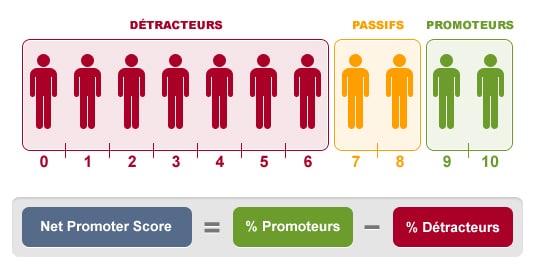
Creating repeatable processes is not easy, and often requires significant investment in information technology, training and change management programs, as well as a thorough review of the company’s mission, vision and values. Above all, we need committed managers who are committed to delivering on the company’s promises.
#7 Start building customer relationships early
All stakeholders must be included right from the decision-making and assessment phase.
To do this, you need to map out the different personas (decision-maker, influencer, user and detractor). For example, using the RACI matrix to define roles:
- Responsible – makes sure the project runs smoothly.
- Accountable – verifies completion of tasks
- Consultant – advice throughout the project
- Informed – kept informed of project progress
This matrix clearly identifies all the stakeholders involved in the purchasing process, as well as the different stages of the process.
Source: Forbes
For key account sales, you need to identify and integrate three specific types of contact in your sales cycle:
- Decision-makers – those who give the final go-ahead for the sale to go through.
- Managers, including project leaders – mandated by decision-makers to find a solution to a specific problem. They are your main contacts.
- The operational people who will be the end-users – they are the witnesses of the problem to be solved. They can give you the weapons and arguments you need to convince the project owners.
You can interact with other types of profiles, such as support functions, which are consulted for decision-making: for example, the purchasing or legal departments.
#8 Training customer-facing teams
As already mentioned, the B2B purchasing process is becoming increasingly complex. That’s why it’s important to train your teams properly.
They must adopt a coaching posture towards customers, assuming that they know more about their product than the customer, but that they know less about the subject than a potential customer who has done a lot of research.
They also need to be trained to take account of customers’ emotions: for example, if the customer doesn’t trust the sales rep enough, doesn’t appreciate the answer given, or has the impression that the sales rep is hiding behind the company’s general policy. In such cases, the customer will call back and waste your teams’ time.
Train your sales reps to listen for clues about the customer’s personality type and evaluate them to adapt their responses accordingly.
Study your call transcripts to spot words that tend to trigger negative reactions: for example, try to replace all negation formulas (“I mustn’t”, “you can’t”, etc.). Instead of saying “We don’t have this item in stock”, a sales rep can explain “We’ll have stock available for this item in two weeks”.
Beyond profile evaluation, train your sales reps to use all the information they can obtain about a customer.
#9 Don’t overdo it
There’s a feeling that if you can exceed your customers’ expectations, they’ll be more loyal. But in the end, this phenomenon is only marginal.
This belief stems from the fact that customer service is almost systematically evaluated in the light of customer satisfaction. Yet while customer service efforts to exceed customer expectations are often costly and time-consuming, they don’t directly lead to increased loyalty.
20% of satisfied customers in our study said they intended to leave the company in question, and 28% of dissatisfied customers intended to stay.
Worst of all, while good customer service can’t really increase loyalty, bad customer service can destroy it altogether. Customers are more likely to be disloyal than loyal.
To illustrate, you can imagine two cakes, one representing the elements that will promote fidelity and the other infidelity. The loyalty cake is made up of slices such as product quality and brand – the service slice is quite small. Service, on the other hand, represents the lion’s share of the infidelity pie.
Conclusion: we buy from a company because it offers quality products, excellent value for money or a compelling brand. We leave them when they don’t offer good customer service. Invest in quality customer service that meets your customers’ expectations, but don’t overdo it, as loyalty gains are only marginal.


